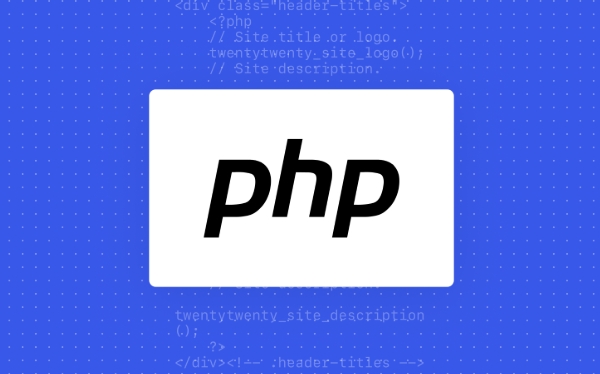The main reason for the failure of header('Location:...') is that it has output before it. 1. Once PHP starts output (such as echo, print, space or line break), the HTTP header is sent and cannot be modified; 2. Typical errors are echo first and then call header; 3. Solutions include ensuring that there is no output before the header and putting redirection at the forefront of the script; 4. Alternative solutions can be used to jump JavaScript, HTML meta refresh or enable output buffering ob_start().

PHP's header('Location: ...') is very direct to use, but if there is already output before it (such as using echo ), there will be problems. This problem is particularly common, especially when newbies write code.

This happens because PHP has already output some content before sending HTTP header information. Once the output starts, the header information cannot be modified, so header('Location: ...') will be invalid and even an error will be reported.
As soon as the output is generated, the header becomes invalid
PHP is parsed and output. The output will be triggered as long as you use echo , print , var_dump , or even spaces or newlines outside the HTML tag. At this time, call header() function again, and an error similar to "Cannot modify header information - headers already sent" will be prompted.

For example:
<?php
echo "Hello";
header("Location: https://example.com"); The above code will not jump, but will report an error. Because echo "Hello" has asked PHP to start sending data to the browser, the header message has been sent out, and it will be too late to change it later.

Solution: Avoid early output
To solve this problem, the most direct way is to ensure that there is no output before header() call. include:
- Do not use echo, print and other output statements before header
- Avoid spaces or line wrapping before PHP tag
<?php - Avoid any content after PHP tag
?>(It is recommended to omit the end tag)
A common practice is to put redirect logic at the front of the script, such as:
<?php
if ($someCondition) {
header("Location: dashboard.php");
exit;
}
// The main body of the page continues to execute echo "Welcome!";This ensures that there is no output interference.
If you can't control the output, you can try these methods
Sometimes when the project structure is complicated or if the content is accidentally output during debugging, you have to take a detour. Here are a few alternatives:
Jump with JavaScript
echo "<script>window.location.href='https://example.com';</script>";
This is not the optimal solution, but it can solve the problem.
Using HTML meta refresh
echo "<meta http-equiv='refresh' content='0;url=https://example.com'>";
The effect is similar to JS and is suitable for simple scenarios.
Turn on output buffering
Enableoutput_bufferingin PHP configuration, or add:ob_start();
In this way, even if you write
echofirst, the content will not be output immediately, and the content will not be output until the call toob_end_flush()or the script is over.
Let's summarize
-
header('Location: ...')must be called before any output - Early output may be caused by
echo, spaces, HTML content, etc. - It is best to put the redirect logic at the front of the script
- If it really doesn't work, you can use JS or meta tags to jump, or enable output buffering.
Basically all this is not complicated but easy to ignore.
The above is the detailed content of PHP header location not working after echo. For more information, please follow other related articles on the PHP Chinese website!
-

Hot AI Tools

Undress AI Tool
Undress images for free

Undresser.AI Undress
AI-powered app for creating realistic nude photos

AI Clothes Remover
Online AI tool for removing clothes from photos.

Clothoff.io
AI clothes remover

Video Face Swap
Swap faces in any video effortlessly with our completely free AI face swap tool!

Hot Article

Hot Tools

Notepad++7.3.1
Easy-to-use and free code editor

SublimeText3 Chinese version
Chinese version, very easy to use

Zend Studio 13.0.1
Powerful PHP integrated development environment

Dreamweaver CS6
Visual web development tools

SublimeText3 Mac version
God-level code editing software (SublimeText3)

Hot Topics
 Why We Comment: A PHP Guide
Jul 15, 2025 am 02:48 AM
Why We Comment: A PHP Guide
Jul 15, 2025 am 02:48 AM
PHPhasthreecommentstyles://,#forsingle-lineand/.../formulti-line.Usecommentstoexplainwhycodeexists,notwhatitdoes.MarkTODO/FIXMEitemsanddisablecodetemporarilyduringdebugging.Avoidover-commentingsimplelogic.Writeconcise,grammaticallycorrectcommentsandu
 How to Install PHP on Windows
Jul 15, 2025 am 02:46 AM
How to Install PHP on Windows
Jul 15, 2025 am 02:46 AM
The key steps to install PHP on Windows include: 1. Download the appropriate PHP version and decompress it. It is recommended to use ThreadSafe version with Apache or NonThreadSafe version with Nginx; 2. Configure the php.ini file and rename php.ini-development or php.ini-production to php.ini; 3. Add the PHP path to the system environment variable Path for command line use; 4. Test whether PHP is installed successfully, execute php-v through the command line and run the built-in server to test the parsing capabilities; 5. If you use Apache, you need to configure P in httpd.conf
 PHP Syntax: The Basics
Jul 15, 2025 am 02:46 AM
PHP Syntax: The Basics
Jul 15, 2025 am 02:46 AM
The basic syntax of PHP includes four key points: 1. The PHP tag must be ended, and the use of complete tags is recommended; 2. Echo and print are commonly used for output content, among which echo supports multiple parameters and is more efficient; 3. The annotation methods include //, # and //, to improve code readability; 4. Each statement must end with a semicolon, and spaces and line breaks do not affect execution but affect readability. Mastering these basic rules can help write clear and stable PHP code.
 PHP 8 Installation Guide
Jul 16, 2025 am 03:41 AM
PHP 8 Installation Guide
Jul 16, 2025 am 03:41 AM
The steps to install PHP8 on Ubuntu are: 1. Update the software package list; 2. Install PHP8 and basic components; 3. Check the version to confirm that the installation is successful; 4. Install additional modules as needed. Windows users can download and decompress the ZIP package, then modify the configuration file, enable extensions, and add the path to environment variables. macOS users recommend using Homebrew to install, and perform steps such as adding tap, installing PHP8, setting the default version and verifying the version. Although the installation methods are different under different systems, the process is clear, so you can choose the right method according to the purpose.
 What is PHP and What is it Used For?
Jul 16, 2025 am 03:45 AM
What is PHP and What is it Used For?
Jul 16, 2025 am 03:45 AM
PHPisaserver-sidescriptinglanguageusedforwebdevelopment,especiallyfordynamicwebsitesandCMSplatformslikeWordPress.Itrunsontheserver,processesdata,interactswithdatabases,andsendsHTMLtobrowsers.Commonusesincludeuserauthentication,e-commerceplatforms,for
 python if else example
Jul 15, 2025 am 02:55 AM
python if else example
Jul 15, 2025 am 02:55 AM
The key to writing Python's ifelse statements is to understand the logical structure and details. 1. The infrastructure is to execute a piece of code if conditions are established, otherwise the else part is executed, else is optional; 2. Multi-condition judgment is implemented with elif, and it is executed sequentially and stopped once it is met; 3. Nested if is used for further subdivision judgment, it is recommended not to exceed two layers; 4. A ternary expression can be used to replace simple ifelse in a simple scenario. Only by paying attention to indentation, conditional order and logical integrity can we write clear and stable judgment codes.
 Your First PHP Script: A Practical Introduction
Jul 16, 2025 am 03:42 AM
Your First PHP Script: A Practical Introduction
Jul 16, 2025 am 03:42 AM
How to start writing your first PHP script? First, set up the local development environment, install XAMPP/MAMP/LAMP, and use a text editor to understand the server's running principle. Secondly, create a file called hello.php, enter the basic code and run the test. Third, learn to use PHP and HTML to achieve dynamic content output. Finally, pay attention to common errors such as missing semicolons, citation issues, and file extension errors, and enable error reports for debugging.
 how to handle undefined index in PHP
Jul 15, 2025 am 02:08 AM
how to handle undefined index in PHP
Jul 15, 2025 am 02:08 AM
The "undefinedindex" error occurs because a key that does not exist in the array is accessed. Solutions include: 1. Use isset() to check whether the key exists, which is suitable for processing user input; 2. Use array_key_exists() to determine whether the key is set, and it can be recognized even if the value is null; 3. Use the empty merge operator?? to set the default value to avoid directly accessing undefined keys; in addition, you need to pay attention to common problems such as the spelling of form field names, the database result is empty, the array unpacking is not verified, the child keys are not checked in foreach, and the session_start() is not called.






